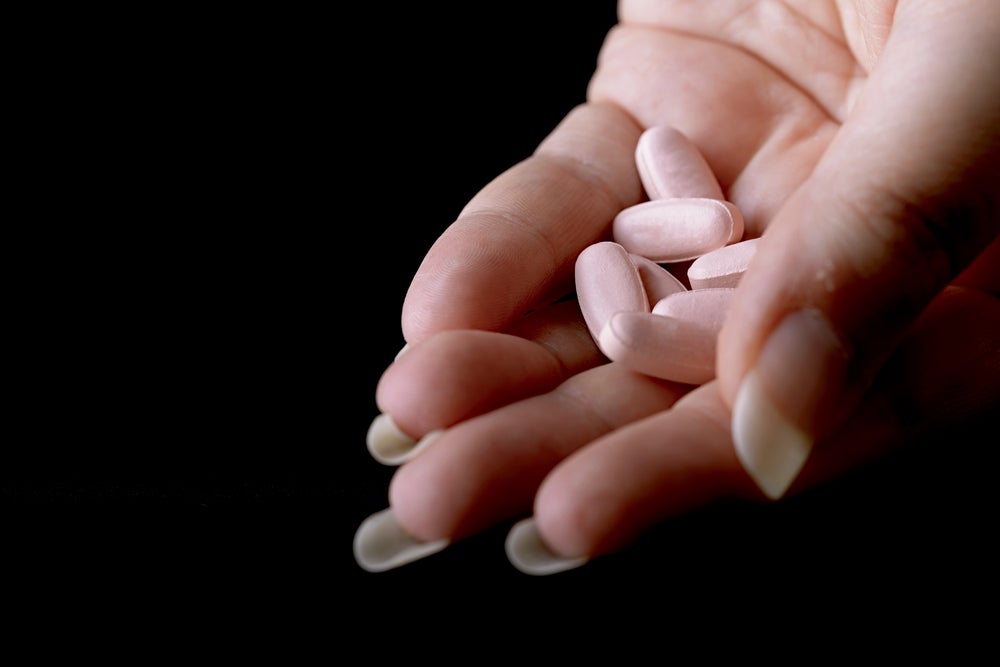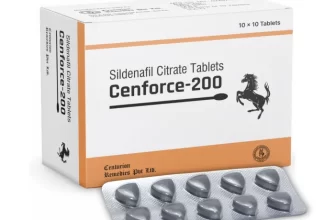Considering a long-lasting solution for female sexual enhancement? Flibanserin, a non-hormonal medication, offers a potential option. Unlike Viagra, which primarily targets blood flow, Flibanserin works differently by affecting brain chemistry linked to sexual desire.
While Flibanserin doesn’t provide immediate results like Viagra, its effects are designed for sustained improvement in libido over time, with some users reporting noticeable changes in sexual response and desire. It’s crucial to understand that results vary, and consistent daily use is typically required.
Important Note: Flibanserin requires a prescription. Consult your doctor to discuss if it’s a suitable option for you, considering your medical history and potential interactions with other medications. They can also help you understand potential side effects and alternative treatment plans.
Remember, open communication with your healthcare provider is vital for finding the best approach to manage sexual health concerns. They can offer personalized guidance and help you make informed decisions.
- Viagra for Women: A 48-Hour Solution?
- Alternative Treatments
- Understanding Expectations
- Seeking Professional Advice
- Understanding Female Sexual Dysfunction and Treatment Options
- Identifying the Root Cause
- Treatment Approaches
- Seeking Professional Help
- The Science Behind Extended-Release Medications for Women
- Formulation Challenges and Considerations
- Clinical Testing and Approval
- Current Research on 48-Hour Female Sexual Dysfunction Medications
- Potential Benefits and Risks of Extended-Release Medications
- Increased Risk of Side Effects
- Dosage Adjustments and Interactions
- Cost Considerations
- Finding the Right Treatment: Consult Your Doctor
- Understanding Your Options
- Beyond Medication: A Holistic Approach
- Safety First: Medication Interactions
- Regular Follow-Ups: Monitoring Progress
Viagra for Women: A 48-Hour Solution?
No medication currently provides a 48-hour effect for women’s sexual dysfunction. While Viagra (sildenafil) exists for men, its mechanism doesn’t directly translate to women’s physiology. Female sexual response is far more complex, involving psychological, physical, and relationship factors.
Alternative Treatments
Several medications and therapies address female sexual dysfunction. Flibanserin, for example, affects brain chemistry to improve libido. Other options include topical creams like alprostadil, which increases blood flow to the clitoris. Comprehensive therapy often includes counseling to address underlying relationship or psychological issues contributing to the problem.
Understanding Expectations
Realistic expectations are key. Focus on improving overall sexual health, not solely on achieving a specific duration of effect. Consult a healthcare professional to discuss available treatments and create a personalized plan. They can assess your individual needs and recommend the most suitable approach.
Seeking Professional Advice
Always consult a doctor before starting any new medication or therapy for sexual dysfunction. Self-treating can be dangerous. A doctor can properly diagnose the underlying cause of your concerns and guide you toward safe and effective solutions.
Understanding Female Sexual Dysfunction and Treatment Options
Many women experience sexual difficulties. These issues range from low desire to painful intercourse and difficulty achieving orgasm. Diagnosing the specific problem is key, as treatments vary.
Identifying the Root Cause
A healthcare professional can help pinpoint the cause. Underlying medical conditions, such as diabetes or thyroid problems, hormonal imbalances, certain medications, relationship issues, and stress all contribute. Open communication with your doctor is crucial for accurate diagnosis.
Treatment Approaches
Treatment options are tailored to individual needs. Hormone therapy may be beneficial for hormonal imbalances. Lifestyle changes, such as stress reduction techniques and improved communication with your partner, often significantly improve sexual function. Counseling can address psychological factors. For some, medication like flibanserin (Addyi) might be prescribed to increase sexual desire. Other medications may treat pain during intercourse. A variety of therapies are available and the best choice depends on the specific diagnosis.
Seeking Professional Help
Don’t hesitate to seek professional medical guidance. Openly discuss your concerns with a gynecologist, urologist, or therapist specializing in sexual health. They can offer personalized assessments and create a treatment plan that’s right for you. Early intervention often leads to better outcomes.
The Science Behind Extended-Release Medications for Women
Extended-release formulations leverage pharmaceutical science to control drug delivery, achieving prolonged therapeutic effects. This is done primarily through various mechanisms, including:
- Matrix systems: The active drug is embedded within a matrix (e.g., polymers) that gradually erodes or degrades, releasing the medication over an extended period.
- Reservoir systems: The drug is encapsulated within a semi-permeable membrane; the medication diffuses out at a controlled rate.
- Osmotic systems: Osmotic pressure drives the release of the drug from a compartment.
- Ion-exchange resins: These bind the drug, releasing it slowly upon interaction with the body’s fluids.
Factors influencing the design of extended-release medications for women include:
- Hormonal fluctuations: The varying hormone levels across a woman’s menstrual cycle may influence drug absorption and metabolism, requiring formulation adjustments to maintain consistent efficacy.
- Body composition differences: Women generally have a higher percentage of body fat compared to men, affecting drug distribution and clearance. Formulations may require optimization to account for these differences.
- Specific drug properties: The drug’s solubility, stability, and degradation rate influence the design of the extended-release system.
Formulation Challenges and Considerations
Developing extended-release formulations presents specific challenges. For example, maintaining consistent drug release over the desired period requires precise control over the matrix or reservoir properties. Also, ensuring drug stability and avoiding burst release (an initial rapid release of a large portion of the drug) are crucial.
Clinical Testing and Approval
Rigorous clinical trials are necessary to confirm the safety and efficacy of extended-release medications. These trials assess the pharmacokinetic (drug absorption, distribution, metabolism, and excretion) and pharmacodynamic (drug effects) properties of the formulation, comparing it to immediate-release versions. Regulatory bodies, such as the FDA, evaluate the data before approving the drug for market use.
- Phase 1: Safety and dosage.
- Phase 2: Efficacy and side effects.
- Phase 3: Large-scale trials to confirm efficacy and monitor adverse events.
Successful completion of these phases is essential before a drug can be made available to patients.
Current Research on 48-Hour Female Sexual Dysfunction Medications
Currently, no FDA-approved medications offer 48-hour efficacy for female sexual dysfunction. Research focuses on several promising avenues.
One area investigates extended-release formulations of existing medications. This involves designing drugs to slowly release active compounds over a longer period. Challenges include maintaining consistent drug levels and minimizing side effects.
Another active research area explores novel drug targets. Scientists are identifying new pathways within the female reproductive system that may improve sexual response. This includes research on neurotransmitters and hormones that influence arousal and desire. Specific compounds are being studied in preclinical models.
| Research Area | Current Status | Potential Benefits | Challenges |
|---|---|---|---|
| Extended-Release Formulations | Preclinical and early clinical trials | Longer-lasting effects, reduced dosing frequency | Maintaining consistent drug release, minimizing side effects |
| Novel Drug Targets | Preclinical research and early drug discovery | Improved efficacy, potentially fewer side effects | Identifying safe and effective compounds, navigating complex biological pathways |
| Combination Therapies | Early exploration | Synergistic effects, addressing multiple aspects of sexual dysfunction | Determining optimal drug combinations and managing potential drug interactions |
Combination therapies, utilizing multiple drugs to target different aspects of female sexual dysfunction, are also under investigation. This approach aims to provide more holistic treatment, addressing both physical and psychological factors. However, careful evaluation of potential drug interactions is necessary.
While a 48-hour solution remains elusive, ongoing research offers hope for future advancements in treating female sexual dysfunction.
Potential Benefits and Risks of Extended-Release Medications
Extended-release formulations offer a significant advantage: fewer doses per day. This improved convenience simplifies medication adherence, leading to better treatment outcomes. For example, a once-daily pill is easier to remember than multiple daily doses. However, this convenience comes with potential drawbacks.
Increased Risk of Side Effects
Because the medication is released slowly over a longer period, the drug concentration in the body remains higher for an extended time. This can increase the likelihood and severity of side effects compared to immediate-release versions. Always discuss potential side effects with your doctor before starting any medication.
Dosage Adjustments and Interactions
Extended-release medications require careful consideration regarding dosage and potential interactions with other drugs. Incorrect dosage can lead to either insufficient treatment or an overdose. Drug interactions, particularly with other medications metabolized through the same pathways, might be amplified. Your doctor should carefully monitor your medication regimen.
Cost Considerations
Extended-release medications can sometimes be more expensive than their immediate-release counterparts. This higher cost needs to be weighed against the potential benefits of improved convenience and adherence. Discuss cost and benefit with your pharmacist and doctor.
Finding the Right Treatment: Consult Your Doctor
Schedule an appointment. Discuss your symptoms and medical history openly and honestly with your doctor. This allows them to accurately assess your needs and rule out any underlying conditions that might be contributing to your symptoms. Accurate diagnosis is key to receiving appropriate treatment.
Understanding Your Options
Your doctor can explain different treatment options available for female sexual dysfunction, beyond prescription medications. This might include lifestyle changes, counseling, or other therapies. They will help you understand the benefits, risks, and potential side effects of each option, tailored specifically to your individual circumstances.
Beyond Medication: A Holistic Approach
Remember, some conditions affecting sexual function are best addressed through a combination of approaches. Your doctor may recommend a holistic plan, possibly including hormone therapy, if appropriate, and strategies to manage stress and improve overall well-being. This could involve exercise, a balanced diet, and stress-reduction techniques. Open communication is crucial for successful treatment.
Safety First: Medication Interactions
Always inform your doctor about all medications, supplements, and herbal remedies you are currently taking. Interactions between drugs can occur and can be harmful. Your doctor will ensure that any prescribed medication interacts safely with other treatments you’re already using. This proactive step will maximize your safety and the treatment’s effectiveness.
Regular Follow-Ups: Monitoring Progress
Regular check-ups allow your doctor to monitor your progress and adjust your treatment plan as needed. This ensures the best possible outcome and lets you address any questions or concerns promptly. Don’t hesitate to contact your doctor between appointments if you have any issues.




